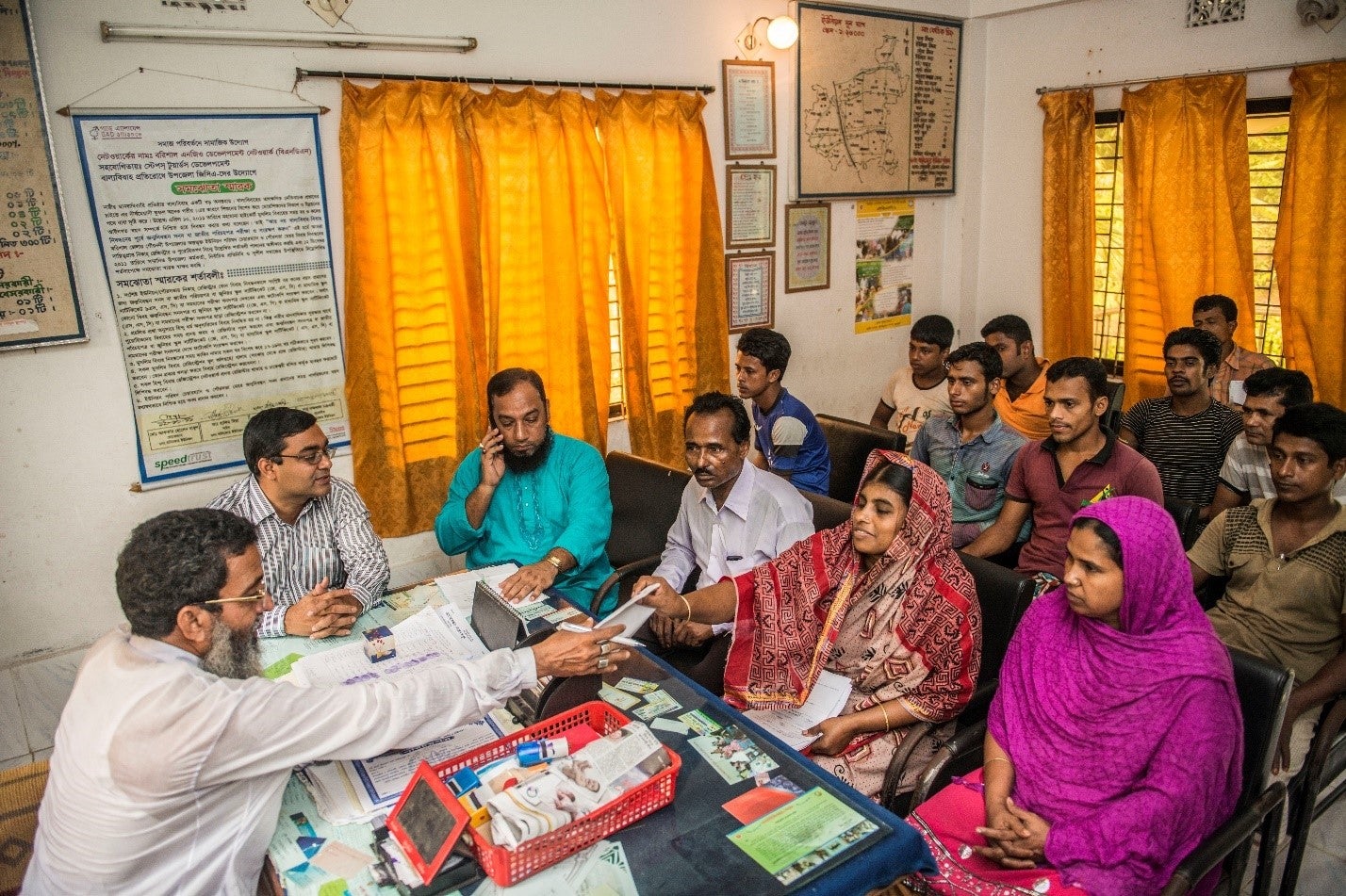 In Bangladesh, the increase in investment in social protection programs have helped program beneficiaries
In Bangladesh, the increase in investment in social protection programs have helped program beneficiaries
The SP initiatives adopted over the years have covered a wide range of beneficiaries and have positively impacted their lives. However, the World Bank’s latest Public Expenditure Review of Social Protection for Bangladesh, which reviews four aspects (planning, design, programming, and delivery) of quality of social protection spending, which together point to elements that could be reformed to increase the overall impact of the resources devoted to this sector. The report reveals that the programs aren’t reaching some of the people who need it most. There is underinvestment in early childhood development, weak support for working age and youth and limited investment for programs focused on households affected by shocks. For instance, while the SP expenditures account for almost one in every eight poor individuals in Bangladesh, less than two percent of these investments are directed at young children.
Planning starts with aligning the allocation of resources with national policies and strategies. With SP being a term that can describe a broad range of programs, covering safety nets or social assistance, insurance against some risks, programs addressing shocks, and interventions focused on employment or productivity, it is critical to categorize these programs in line with the existing National Social Security Strategy (NSSS). As per the NSSS, different risks are faced by different life-cycle groups – pregnancy and early childhood (for instance birth, malnutrition, or cognitive development), school age, working age, elderly etc. Categorization can be based on the programs’ beneficiaries (following the life-cycle) and/or the functions they serve.
The design of these SP programs is just as important as their planning. In order to maximize impact, programs need to be designed to have the right coverage, to target the right beneficiaries and to provide the beneficiaries with the right benefits.
In Bangladesh, regular increases in the social protection budget have typically prioritized increases in coverage. The share of households benefiting from SP programs more than doubled from 12 percent in 2005 to 28 percent in 2016.
The country has been experiencing rapid urbanization, but only about 5 percent of total SP expenditure is exclusively focused on these urban areas. Ideally, coverage should follow poverty rates, with areas with higher poverty benefiting from a stronger coverage. Also, household surveys for 2019 suggest that a high percentage of beneficiaries who received the benefits for allowance programs (old age, widow, disabled, freedom fighters, families of martyrs), food support and maternity allowance programs, were in fact not eligible for them. The public expenditure review finds that reallocating all transfers from beneficiaries in the top 80 percent of the income distribution to beneficiaries in the bottom 20 percent (first quintile) would provide better results. That way extreme poverty and poverty among current beneficiaries would decrease from 22 percent to 4 percent and 36 percent to 12 percent, respectively.
With a focus on increasing coverage, the benefits provided by many programs have stagnated or remain very low, which results in limiting the impact of many programs on poverty. The Public Expenditure Review finds that transfers under the SP programs in Bangladesh are on average equivalent to only about 3 percent of total income of a poor or extremely poor person and are responsible for reducing the poverty or extreme poverty headcount by a maximum of only 2.4%.

Finally, programming, highlights another area where challenges remain. Since, SP in Bangladesh is characterized by a large number of programs with multiple agencies implementing numerous interventions, this often results in fragmentation and coordination challenges.
The budgeting process itself is long, rigid and top-down which often makes it hard to propose innovations. Furthermore, the existence of dual budgeting system, with separate processes for operating and development budgets, weakens strategic alignment and creates inefficiencies. Also, weaknesses in financial reporting and capacity constraints at the local level contribute to inefficiencies.
What can be done?
To minimize systemic inefficiencies and maximize the impact of SP programs, the Bangladesh government should consider the following reforms:
- For planning, strengthen the categorization of SP programs to better inform policies, resource allocation, reporting and monitoring, with better alignment of expenditure with demographic categories . Additionally, mechanisms and financing for shock-responsive programs need to be established, and the scale and scope of labor market interventions, including economic inclusion programs should be increased.
- For design, reform key programs by focusing on the size of benefits or on expansion while rebalancing geographic allocations between rural and urban areas, with programs tailored to urban poverty . Additionally, eligibility criteria to boost programs’ impacts should be reviewed and the use of a social registry, such as the National Household Database (NHD), to improve targeting at a reduced cost should be institutionalized. A transition towards a “systems approach”, where households can combine programs according to their needs would also be beneficial.
- For programming, improve the design of large programs for maximum impact, while progressively consolidating or terminating small programs/projects to reduce fragmentation. Furthermore, strengthening financial reporting and auditing would help ensure efficient utilization of resources.
To learn more, read the full report here.




Join the Conversation